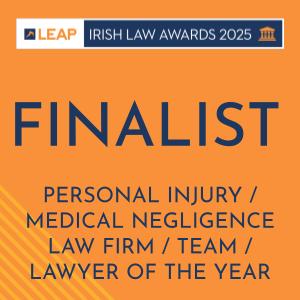Erbs Palsy Birth Injury Cases
Erb’s Palsy is a birth injury that can be quite distressing at first appearance, as the baby’s arm hangs limply from the shoulder. However, in general, there is good rate of recovery for these babies.
Sometimes, the baby’s nerve damage will not completely repair and in these circumstances, it might be advisable to explore whether it would be worthwhile to pursue a case for medical negligence on behalf of your child. If damages are awarded, the monies could be used to help further your child’s rehabilitation and safeguard their future.
What is Erbs Palsy?
Erbs Palsy is a form of brachial plexus injury, which is caused during the labour process.
The brachial plexus is a bundle of nerves in the shoulder, which carry movement and sensory signals from the spinal cord to the arms and hands.
An Erb’s Palsy birth injury is when the upper part of the brachial plexus is damaged during birth. The nerve roots are either stretched, ruptured or are pulled away from the spinal cord.
It causes the baby’s arm to hang limply from the shoulder, with flexion of the wrists and fingers. The baby will be unable to move its arm (due to weakness or paralysis) and this can often be resolved through physiotherapy or surgery.
The rate of recovery in the newborn stage is a good indicator for the final recovery outcome. Complete recovery is unlikely if no improvement has been made in the first two weeks of life.
What causes Erb’s Palsy?
One of the most common causes of Erb’s Palsy birth injury is when the baby’s head and neck is excessively stretched or pulled in opposite directions during delivery. This usually occurs when either one or both of baby’s shoulders become stuck in the mother’s pelvis (referred to as shoulder dystocia). The brachial plexus can become compressed, stretched or torn.
If the baby is breached, the brachial plexus can be damaged if the baby’s shoulder is pulled too forcefully, or if there is excessive pressure on the baby’s raised arm during delivery.
Also, the brachial plexus can be damaged by the natural expulsive force of the uterus.
Risk factors for Erb’s Palsy
- Shoulder dystocia
- Large baby (macrosomia)
- Breach position
- Instrumental delivery e.g. Kiwi Cup, Forceps, Ventouse
- Duration of the second stage of labour (over 60 minutes)
- Small or abnormal maternal pelvis shape
- Gestational diabetes
- Maternal obesity
Recovery/Rehabilitation
Sometimes the nerve injury will heal without intervention. Many babies will improve or recover when they reach 3 or 4 months old, but recovery may take up to two years.
The extent of the injury can be managed with physiotherapy and/or surgery. Early physiotherapy intervention (within the first four weeks of birth) is very important for a successful recovery.
Additionally, occupational therapy can a help a child to develop the strength to perform everyday activities, such as picking up a toy or bottle. An occupational therapist will use a range of movement exercises to improve joint function and muscle tone.
Can Erb’s Palsy be caused by Medical Negligence?
A baby’s Erb’s Palsy may have been caused by medical negligence.
It must be proved that there was a breach of the duty of care owed by the medical practitioner and that this breach caused the Erb’s Palsy.
If you suspect that your child’s Erb’s Palsy birth injury could have been prevented, then it is advisable to contact a solicitor to get further advice.
Specialist Birth Injury Solicitors
We at McMahon Goldrick Solicitors, specialise in acting on behalf of children who have sustained birth injuries caused by medical negligence.
We are the only firm in Ireland to exclusively specialise in representing clients who have sustained birth, brain & spinal injuries.
Due to the small & specialist nature of our firm, we have the ability to spend the necessary time to do a thorough examination of the medical records in a potential new birth injury matter and we continuously educate ourselves on the new & emerging recommended best obstetric & neonatal care practices
If you would like any further information on Erb’s Palsy, or have an enquiry in relation to a possible birth injury matter, please feel free to call or email us any time.
Further information on birth injury claims
https://rmcm.ie/birth-injury-solicitors/
Success Story – €820,000 for 7-year-old girl with Erb’s Palsy
McMahon Goldrick Solicitors successfully acted on behalf of a 7-year-old girl in her medical negligence claim against the HSE for her erbs palsy birth injury.
The Plaintiff was born at term, weighing 8.2 pounds. She required vacuum extraction for failure to progress and delivery was complicated by shoulder dystocia. Furthermore, she had low Apgars scores and required intubation and ventilation and was treated with hypothermia for the first four days. She had a degree of hypoxic ischaemic encephalopathy, including neonatal seizures.
The Plaintiff was later diagnosed with a severe brachial plexus injury of her left upper limb, classified as Narakas Grade III. Treatment for this injury required a number of surgical procedures, which significantly improved the movement and function of her affected limb, however, she still had a significant limitation of dexterity strength and movement on that side.
We obtained expert opinion from a Consultant Obstetrician who criticised the obstetric care received. He noted that there was a failure by the midwife to appreciate the implication of infant being a large baby with a high head, and the effect that this might have on the labour. There was an inappropriate decision to give syntocinon, without proper review of the circumstances of the labour. There was poor foetal descent, and four instruments were used, contrary to all guidance that was applicable.
Our Consultant Obstetrician concluded that the conduct of delivery fell considerably below a reasonable standard of practice. He concluded that the Registrar acted in a way that no medical practitioner of equal specialist or general status of skill would be guilty of if acting with ordinary care.
It was concluded that the Plaintiff’s Erb’s Palsy and encephalopathy was directly attributable to the inappropriate attempt at vaginal delivery.
As a result of the various expert opinions obtained by McMahon Goldrick Solicitors, a settlement was reached in the amount of €820,000 to cover the Plaintiff’s past & future care, medical expenses, future therapies, housing needs and future loss of earnings.
It was our pleasure to act on behalf of such a deserving family.




